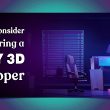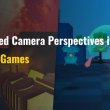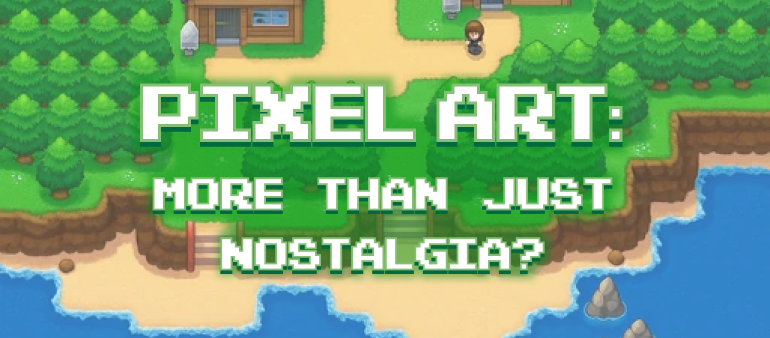Unity announced the release of Unity 5 on March 3, 2015 in San Francisco, CA. Unity 5.0 is the latest and biggest release of the multiplatform engine. The game development platform has been used to create video games since June 2005 and ever since it has taken the process of developing games to another level. There have been some leading upgrades and changes in the application over the years. Especially in Unity 5, there have been massive improvements that are seen in the version. The 64-bit support, global illumination, physically based rendering, physX3, speedtree, audio tools, and WebGL support are the major ones. In this blog, we are going to stress over the Unity 5 WebGL games exporter that allows game creators to create interactive and immersive games.
Web Graphics Library is a javascript API that renders interactive 2D and 3D graphics. It was designed by Khronos Group which is a computer software company based out of the US. The WebGL exporter uses WebGL API in Unity 5 to give the game developers the comfort to publish and run GPU-accelerated graphics and Unity 5 webGL games on the web and on any web browser effortlessly without the use of any plug-ins.
Develop WebGL games with Unity 5
Unity 5 WebGL supports a lot of features that help the developers create and render visual elements with great quality and complexity.
Global Illumination (GI)
GI plays a significant role in making the virtual gaming world look more realistic and feel more immersive. Unlike other real time graphics applications, GI is not just limited to how direct light behaves but also models how / indirect light behaves, reflects and creates effects in the virtual world. Objects that are placed in a gaming ecosystem affect each other’s appearance. Unity also backs up the process of Baked GI or Baked Lightmaps where baked GI is pre calculated and stored to render more realistic shadows from indirect light. On the other hand, Precomputed realtime GI computes all possible light and provides information for use by a developer at runtime.
Procedural Materials
It is Unity’s asset type that functions as standard materials. These are textures that are produced at run-time and the procedural material assets contain procedural material. It provides the developers with the advantages of flexibility, modularity, faster workflow iteration, and reuse. This Procedural Material System supports all hardware configurations on various platforms such as Windows, Linus, Mac, Android, iOS, PlayStation 4 and Xbox One. Each procedural material in Unity lets the developers create unique materials from scratch by setting up a script at runtime. It also lets you integrate complex texture animation to the scene. There are design tools available for the artists to generate procedural materials. Also, applications with substance technology like Allegorithmic’s Substance Designer and other 3D modelling apps are available to create procedural materials.
Linear Rendering
Linear Rendering support in Unity 5 WebGL ensures consistent lighting across the scenes and assets which is possible when the inputs, outputs, and the computation of a shader are in the right color space. Linear color space workflow gives more precise rendering compared to Gamma color space. While using linear space rendering, the colors blend in a linear color space resulting in precise blending results.
Movie Textures
These are animated textures that are created by placing a video file in a project’s assets folder to import an image or a video into the Unity Editor. The movie textures inspector has the anisotropic filtering level that makes textures look better, especially from a steep angle. This property of movie textures is used to enhance the appearance of roads, grounds, and floor Textures. The filtering mode of movie textures filters textures in different ways when it is stretched by 3D transformations. Movie textures also comprise the property of loop where after the movie finishes playing, the movie texture loops.
Like all Unity platforms, Unity 5 WebGL supports font rendering and has access to the fonts that are included by the user in the assets folder and not the ones that are installed in the user’s system. It lets the user create or import fonts for use in GUI Text or Text Mesh components that lets the user change its color using custom Material for the font. The font rendering mode in Unity’s WebGL tells Unity how to implement smoothing to the glyphs (the visual representation of a text element or character).
WebGL is about creating shaders and to do so it requires a vertex shader and a fragment shader that are linked to one another in a shader program. A vertex shader receives data through attributes (from buffer), uniforms, and textures (from pixels and texels) to calculate the coordinates of vertices and create clip space coordinates. On the other hand, a fragment shader gets its data from uniforms, textures, and varyings (from shaders) to compute the pixel colors.
WebGL supports Anti-Aliasing that makes the appearance of the graphics smoother and enhanced. This feature can be used on most combinations of browsers and GPUs. Anti-aliasing uses anti-aliasing algorithms that makes the lines appear less jagged as they usually seem in aliasing by surrounding them with shades of colors.
Reflection Probes
It works great in changing the reflections on the object according to its surroundings by capturing a spherical view of its environment in all directions. The reflection probe can be used for a baked, custom, or realtime setup. The box projection, box size, and box offset lets the user enable projection for reflection UV mappings and set the size and the centre of the box where reflection will be applied to the GameObject. The Cubemap in the reflection probe inspector is where the captured image is stored for objects with reflective materials to use it.
Some of the best Unity 5 WebGL games have been developed in recent years and the WebGL API has made that possible by offering its users innumerous frameworks, game engines, tools, and libraries. The artists and developers no longer need the support of third party plugins to carry out simple processes. The Unity 5 WebGL games are enhanced with better quality graphics and hardware. This native, free, and fast technology allows you to use external libraries to create outstanding 3D gaming experiences.
Browser compatibility
Unity WebGL supports major desktop browsers but the level of performance varies in different browsers. Web Assembly is a format that is portable and load-time efficient and it allows high-performance applications to function on web pages. It has many advantages that include its exemplary load time and performance in four leading browsers. New features, functionalities, WebGL2.0 graphics API support and an emscripten that lets the user compile applications and libraries written in C or C++ ahead of time and run efficiently in most web browsers.
WebGL Browser scripting
With Unity WebGL, the web developers can explicitly interface with the browser’s javascript engine allowing all elements on the web page to interact with each other. This communication on the web or implementation of functionality using web APIs is carried out by the browser’s javascript engine through interfacing. The data and notifications are sent from the browser’s javascript to the Unity script by calling methods on GameObjects in your content. With Unity WebGL, the users can publish content as javascript programs.
In order to use browser Javascript in your project, you need to add javascript sources to your project and use your script code to call its functions. An Emscripten provides the GL.textures array to access a texture in WebGL and map native texture IDs from Unity to WebGL texture objects.
Unity 5 WebGL features lets you you map textures that are arrays of data including colors that the user can access in the shader program. The mapping of textures can be done by supplying data (add code) from Javascript to textures.
Logic Simplified, is a Unity game development company based out of Dehradun that has a team of web developers that hold the relevant knowledge, skills, and expertise to create 3D canvas graphics for the Unity 5 WebGL games. If you’re looking for passionate creators to build you a powerful and high performance WebGL game with Unity 5's striking 2D and 3D graphics programming interface, hire Unity game developers at Logic Simplified. To know more about us, just drop us an email at enquiry@logicsimplified.com.
 Get a Quote
Get a Quote










